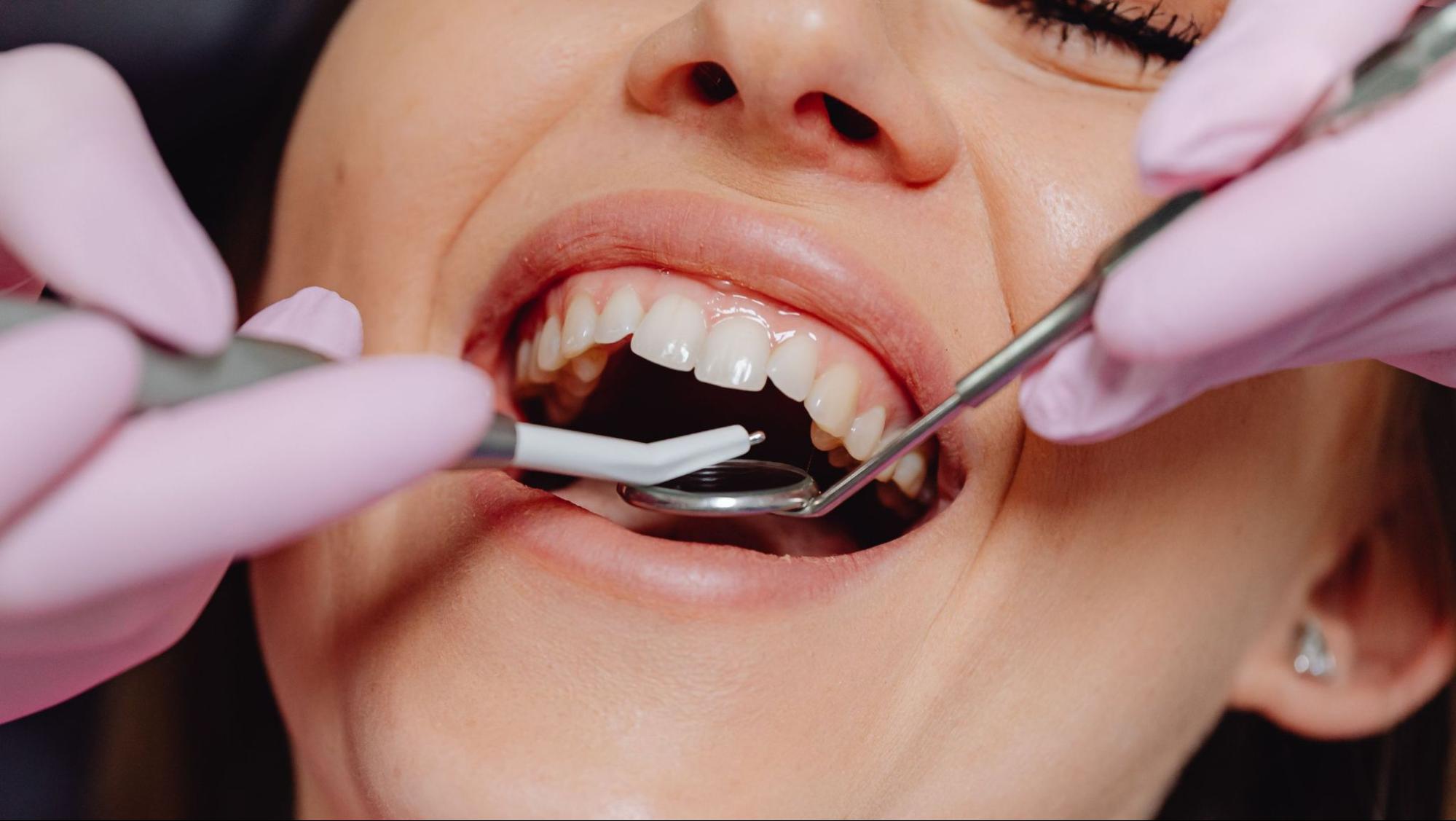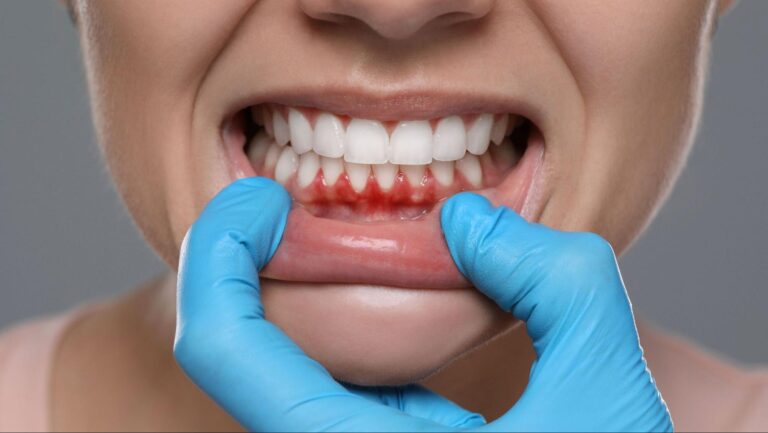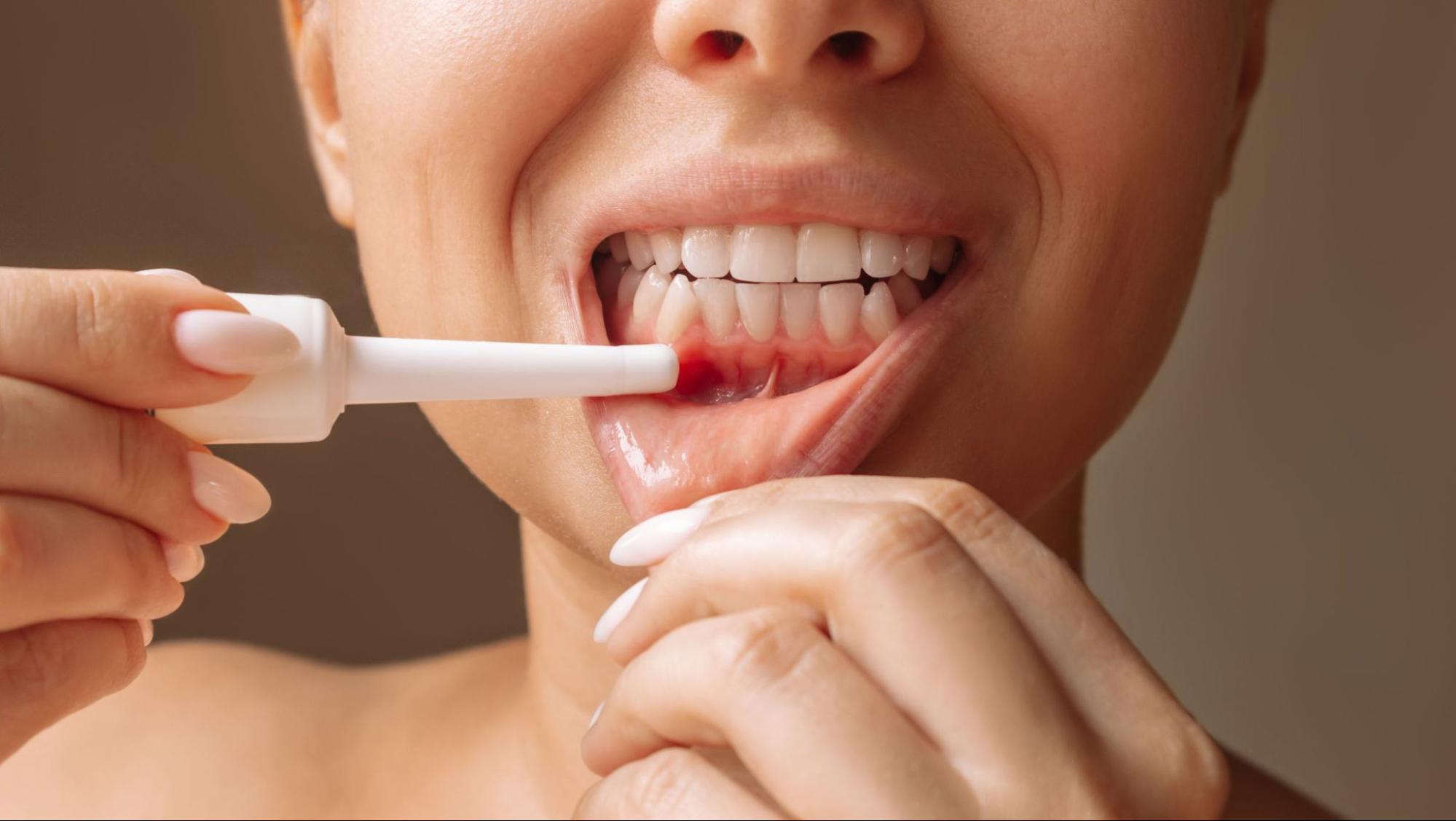Almost half of Americans aged 30 and older have some form of gum disease. Professionally referred to as periodontal disease, gum disease is an infection in the tissues that hold your teeth and is the leading cause of tooth loss. Fortunately, it’s also preventable with good oral hygiene and preventative care, which may be supported by a dental insurance policy.
1. Reddish Gums
If you have healthy gums, they should be pink and firm to the touch. Discoloring may be an early sign of gingivitis, which is the earliest stage of gum disease. At this stage, there’s no destruction to your underlying jawbone, which makes gingivitis reversible with proper treatment.1
2. Swelling Or Bleeding Gums
If your gums bleed when you floss or brush your teeth, or if they frequently swell, it may be an indicator of either gingivitis or mild periodontitis (gum disease), which is when bacteria seeps beneath your gums, affecting the supporting bone. This could pull your gums away from your teeth, creating pockets that brushing and flossing can’t reach.1 If you start to notice your toothbrush is pink after brushing or you’re frequently spitting out blood after brushing or flossing, you should speak to your dentist.
3. Frequent Bad Breath
Untreated gum disease gradually breaks down the ligaments, tissues, and bone that hold your teeth in place.
When you begin to experience bad breath that you can’t seem to get rid of with gum or mints or notice a persistent bad taste in your mouth, it may be an indicator that gum disease is progressing in part of your mouth.
4. Pain When Chewing
When chewing becomes painful or you feel persistent soreness in your gums, it’s another indicator that periodontitis is progressing. You may notice gum recession to the point that your teeth become loose, indicating that your jawbone has started to erode. This is a serious symptom that you should address with your dentist immediately to avoid tooth loss.
If you check out this dentist in Beverly Hills CA now, they’ll also tell you that pain while chewing can also affect your ability to enjoy meals and maintain proper nutrition, especially if you begin avoiding certain foods. Seeking prompt treatment not only helps relieve discomfort but also protects your long-term oral function and overall health.
Causes of gum disease
Generally, gum disease is caused by a buildup of dental plaque. Over time, plaque advances in the following stages:1
- Forms on your teeth when food interacts with the bacteria found in your mouth
- Hardens under the gumline into tartar if it stays on your teeth for a prolonged period of time and isn’t removed by brushing and flossing
- Gets into the pockets of your gums, causing gingivitis
- Forms and fills deeper pockets within your gums, potentially causing tissue and bone loss that may eventually strain your immune system
How To Prevent And Treat Gum Disease
The best way to help prevent gum disease is through good oral hygiene and paying attention to the warning signs. That includes brushing your teeth for two minutes at least twice each day and flossing daily. You should also see your dentist for routine dental treatments each year and avoid risk factors like smoking.1
Should gum disease progress, you may have to pursue more aggressive treatments, such as:2
- Scaling and root planning: This procedure is similar to a routine dental care, but goes deeper beneath your gums to remove plaque and bacteria from areas your toothbrush and floss can’t reach.
- Pocket reduction surgery: In this surgery, a periodontist cuts into your gums to remove plaque and tartar that are so deep within the gums that it can’t be reached with traditional cleaning methods. Some periodontists perform this procedure less invasively with a handheld laser, known as LANAP.
- Bone grafting: If you’ve lost bone to gum disease, a bone graft will replace it and give your body a scaffolding to regenerate its own bone.
- Gum grafting: Also called tissue grafting, this procedure covers exposed teeth roots and thickens your gum line.
- Guided tissue regeneration (GTR): Periodontists often use GTR alongside a bone graft to place an artificial membrane between your gums and a new bone graft to support new bone growth.
The Bottom Line
Gum disease is remarkably common and the leading cause of tooth loss in the United States.1 However, it’s also treatable and, in many cases, reversible.

Make sure to maintain proper oral hygiene and visit the dentist regularly for dental care. Dental cleaning costs and other expenses can be more manageable with dental insurance, and preventative care can help you avoid periodontitis and more serious issues like tooth loss.
Sources:
1 WebMD – Gingivitis and Periodontal Disease (Gum Disease). Updated February 9, 2024. https://www.webmd.com/oral-health/gingivitis-periodontal-disease. Accessed April 24, 2025.
2 WebMD – How to Treat Gum Disease. Updated January 29, 2025. https://www.webmd.com/oral-health/gum-disease-treatments. Accessed April 24, 2025.
Content within this article is provided for general informational purposes and is not provided as tax, legal, health, or financial advice for any person or for any specific situation. Employers, employees, and other individuals should contact their own advisers about their situations. For complete details, including availability and costs of Aflac insurance, please contact your local Aflac agent.
This is a brief product overview only. Coverage may not be available in all states, including but not limited to NH, NJ, NM, NY, or VA. Benefits/premium rates may vary based on plan selected. Optional riders may be available at an additional cost. Policies and riders may also contain a waiting period. Refer to the exact policies and riders for benefit details, definitions, limitations and exclusions. For availability and costs, please complete the form above.
Aflac coverage is underwritten by American Family Life Assurance Company of Columbus. In New York, Aflac coverage is underwritten by American Family Life Assurance Company of New York.
Dental: In Delaware, Policies A82100R–A82400R. In Idaho, Policies A82100RID–A82400RID. In Oklahoma, Policies A82100ROK–A82400ROK. In Virginia, Policies A82100RVA–A82400RVA.
Coverage underwritten by Tier One Insurance Company:
Dental, Vision and Hearing: In Delaware, Policy T80000. In Idaho, Policy T80000ID. In Oklahoma, Policy T80000OK. Dental claims are administered by SKYGEN USA, LLC. Vision claims are administered by EyeMed Vision Care, LLC. Hearing claims are administered by Nations Hearing. NOTICE: The coverage offered is not a qualified health plan (QHP) under the Patient Protection and Affordable Care Act (ACA) and is not required to satisfy essential health benefits mandates of the ACA. The coverage provides limited benefits.
Tier One Insurance Company is part of the Aflac family of insurers. In California, Tier One Insurance Company does business as Tier One Life Insurance Company (NAIC 92908).
Aflac WWHQ | Tier One | 1932 Wynnton Road | Columbus, GA 31999
Z2500293 Exp 5/26





